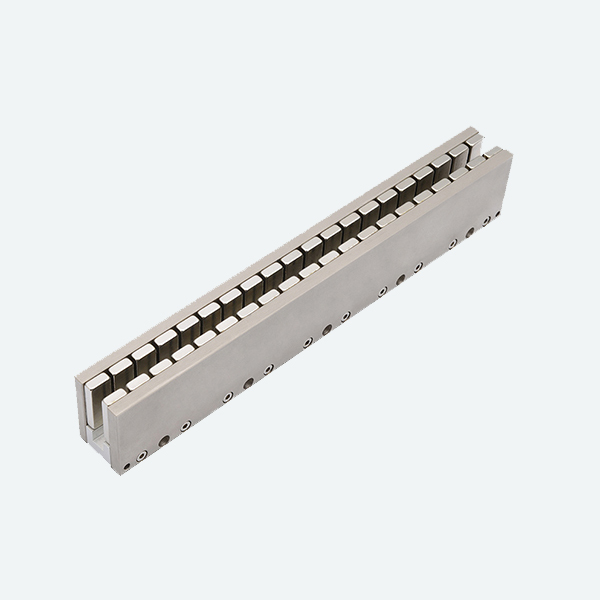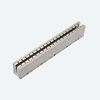Product Category
- Standard Magnets
- Customs Magnets
- Magnetic Assmblies
A linear motor is an electric motor that has had its stator and rotor "unrolled" so that instead of producing a torque(rotation) it produces a linear force along its length. However, linear motors are not necessarily straight. Characteristically, a linear motor's active section has ends, whereas more conventional motors are arranged as a continuous loop.
Free-body diagram of a U-channel synchronous linear motor. U-channel linear motors have two parallel magnet tracks facing each other with the forcer between the plates. The forcer is supported in the magnet track by a bearing system. The forcers are ironless, which means that there is no attractive force and no disturbance forces generated between the forcer and magnet track. The ironless coil assembly has low mass, allowing for very high acceleration.
Typically, the coil winding is three-phase, with brushless commutation. Increased performance can be achieved by adding air-cooling to the motor, and there are even water-cooled versions available. This design is better suited to reduce magnetic flux leakage because the magnets face each other, housed in a U-shaped channel. The design also minimizes the risk of injury from the powerful magnetic attraction.
The design of the magnet tracks allows them to be combined to increase the length of travel, with the only limit to operating length being the length of the cable management system; encoder length available; and the ability to machine large, flat structures.
Magnet linear motion are available in a wide range of sizes and can be easily adapted to most applications.
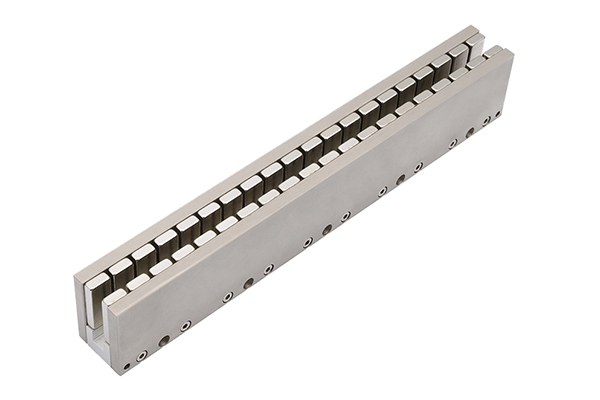 | 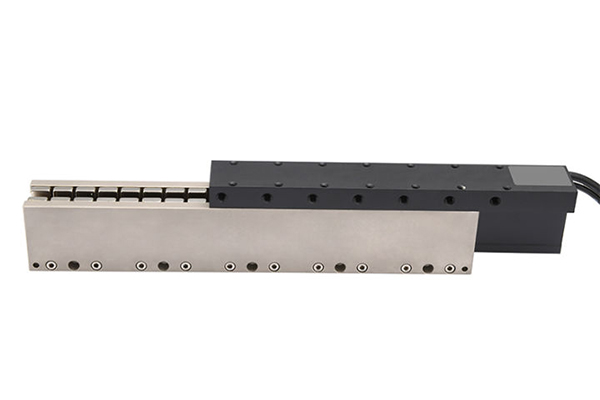 |
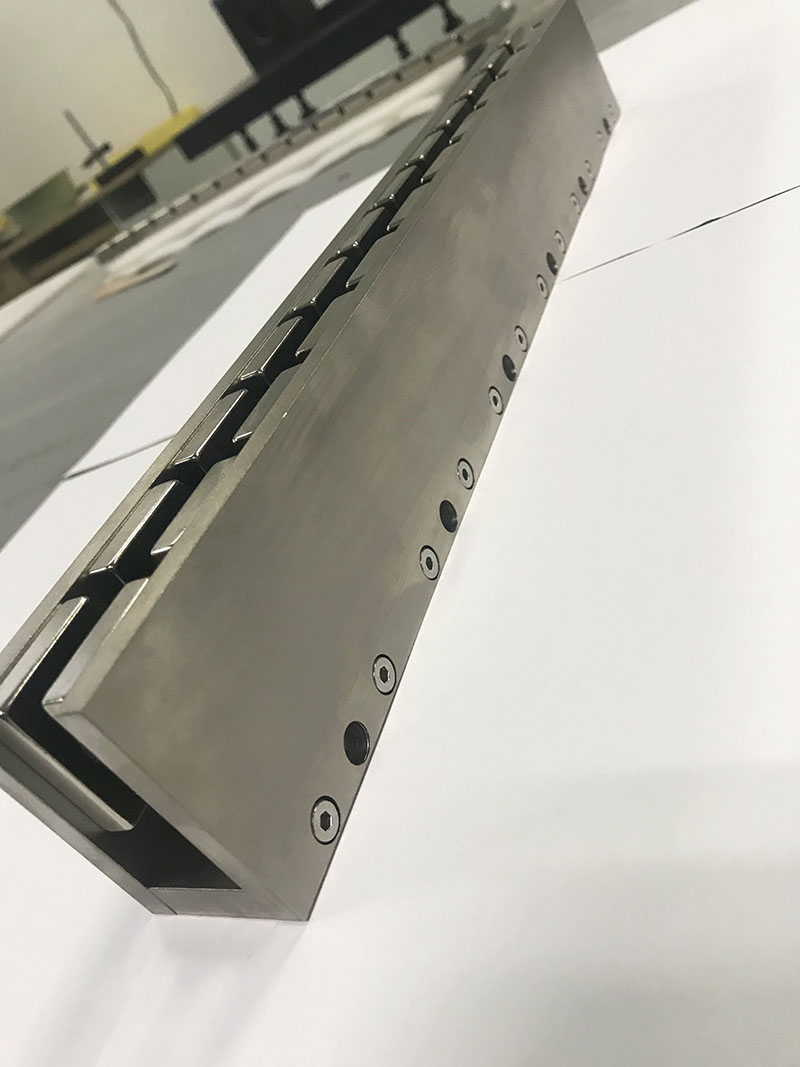 | 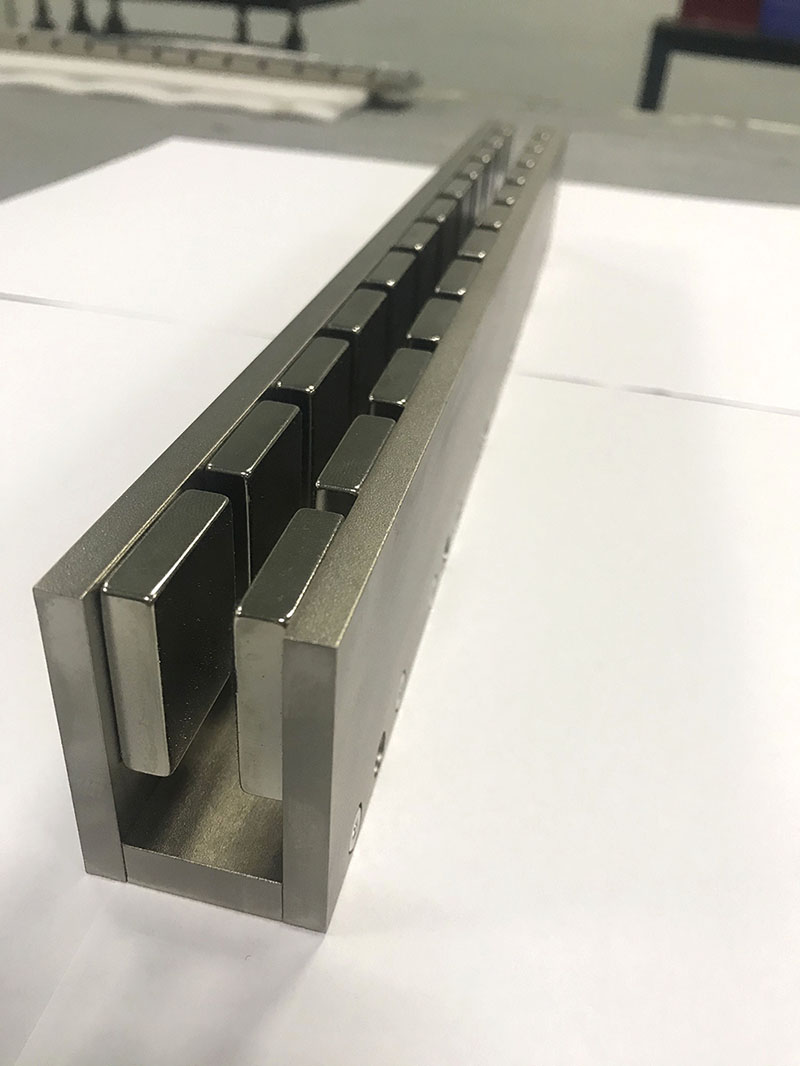 |
A linear motor is an electric motor that has had its stator and rotor "unrolled" so that instead of producing a torque(rotation) it produces a linear force along its length. However, linear motors are not necessarily straight. Characteristically, a linear motor's active section has ends, whereas more conventional motors are arranged as a continuous loop.
Free-body diagram of a U-channel synchronous linear motor. U-channel linear motors have two parallel magnet tracks facing each other with the forcer between the plates. The forcer is supported in the magnet track by a bearing system. The forcers are ironless, which means that there is no attractive force and no disturbance forces generated between the forcer and magnet track. The ironless coil assembly has low mass, allowing for very high acceleration.
Typically, the coil winding is three-phase, with brushless commutation. Increased performance can be achieved by adding air-cooling to the motor, and there are even water-cooled versions available. This design is better suited to reduce magnetic flux leakage because the magnets face each other, housed in a U-shaped channel. The design also minimizes the risk of injury from the powerful magnetic attraction.
The design of the magnet tracks allows them to be combined to increase the length of travel, with the only limit to operating length being the length of the cable management system; encoder length available; and the ability to machine large, flat structures.
Magnet linear motion are available in a wide range of sizes and can be easily adapted to most applications.
 |  |
 |  |

